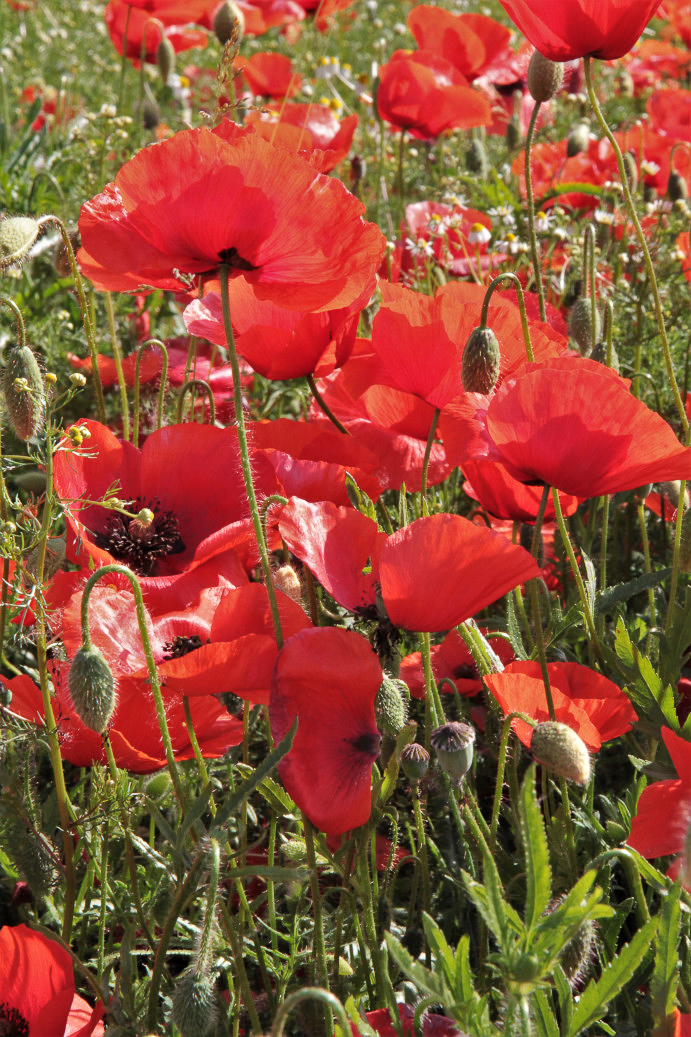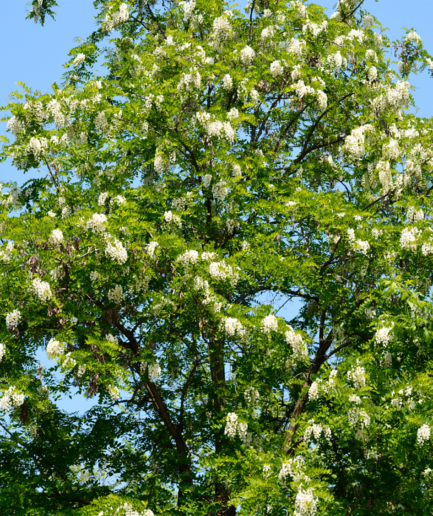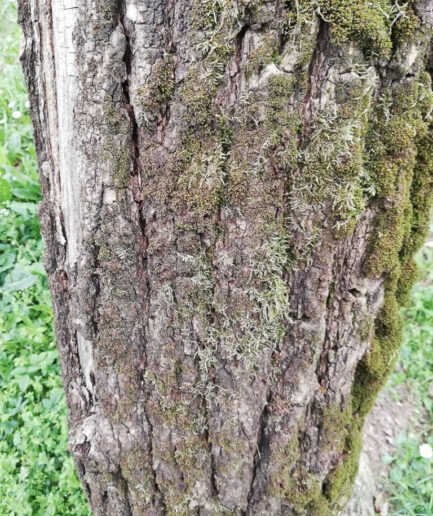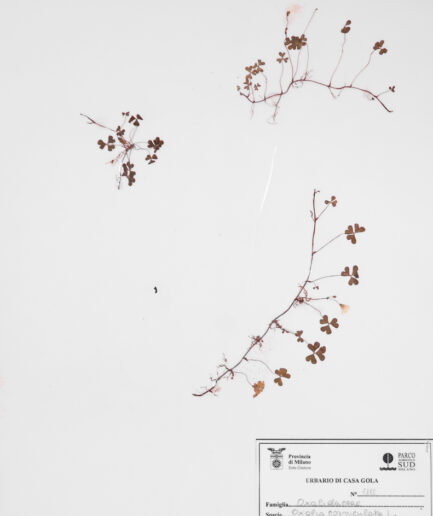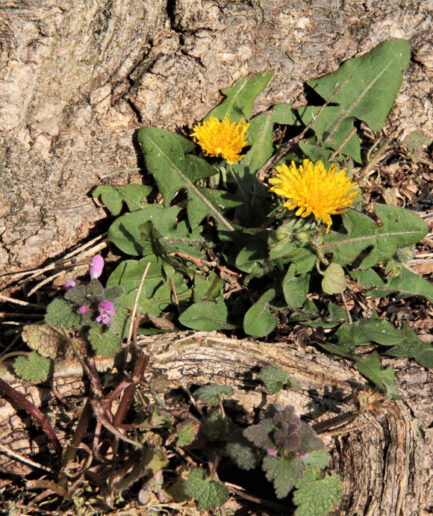Common Poppy
Scientific name: Papaver rhoeas L.
Family: Papaveraceae
MORPHOLOGY
Growth habit and size: An annual herbaceous plant with a white taproot. Height ranges from 20 to 80 cm.
Stem: Erect, branched, and bristly stems covered with long, spreading hairs.
Leaves: The leaves have soft, bristly hairs. Basal leaves form a rosette, are pinnately divided with lanceolate or elliptical segments, have a toothed margin, an acute apex, and a long petiole. Cauline leaves are simpler and sessile.
Flowers: Solitary flowers bloom at the apex of long, hairy peduncles, are odorless, and measure 5 to 7 cm in diameter, with pendulous buds before blooming. The calyx has 2 hairy, deciduous sepals. The corolla consists of 4 rounded petals, also very ephemeral (lasting a day or slightly more), bright red with black spots at the base. Numerous blackish stamens. It blooms from March to September.
Fruits and seeds: The fruit is a glabrous oval capsule topped with a flat stigma, containing numerous small, kidney-shaped, grayish, reticulated seeds, that are released through openings under the stigma when ripe. Each plant produces an average of 10,000 to 20,000 seeds that remain viable in the soil for up to 40 years.
DISTRIBUTION AND HABITAT
It grows throughout Italy from sea level up to 1,900 m. It is a synanthropic species found in fields, dry fallow lands, and ruderal environments, along roadsides and railways, often as a weed in cereal crops in cultivated lands. It is an allochthonous plant of unknown origin and means of arrival (cryptogenic).
USE
Papaver rhoeas has mild, astringent, sedative properties and is used for its analgesic, antispasmodic, anti-inflammatory, and expectorant effects. It contains the alkaloid rhoeadine, and other alkaloids still under study, resins, mucilage, and coloring substances. The presence of morphine and meconic acid (found in opium) is not yet confirmed. Infusions of the petals are used as mild sedatives, cough suppressants, and expectorants. Historically, it was used as a remedy for gout and shingles (St. Anthony’s fire). For toothache, compresses soaked in infusion were used, which was also applied to soothe red or wrinkled skin. Before taking any plant-based product (medicinal or non-medicinal) for therapeutic or similar purposes, it is always advisable to consult a doctor.
The petals can be used to obtain a red dye due to the presence of bright red anthocyanins; in the past, this dye was used by women to color their lips and cheeks. The tender rosettes of spring leaves can be eaten in salads, preferably mixed with other herbs; they can also be used mixed with other herbs to prepare savory pies, soufflés, or fillings, or first boiled and then sautéed in a pan with butter, garlic, oil, and chili pepper.
INTERESTING FACTS
In the past, a simple popular game was the “stamps” obtained by pressing fresh capsule stigmas on the forehead and the “dolls” prepared by opening the buds and slightly pulling out the crinkled petals to create a dress. In the Anglo-Saxon world, Papaver rhoeas is traditionally dedicated to the memory of World War I and II victims. In England, on Armistice Day, it is customary to wear a red poppy on one’s lapel.
“The tall poppies of politics” and “A big poppy got him that position…” are phrases still common today. Interestingly, this saying originated with Tarquin the Proud, a king of Rome, who demonstrated to his son how to seize Gabii (an ancient city in Lazio) by cutting down the tallest poppies in his garden, symbolizing the need to eliminate the most influential citizens first. In popular tradition, snapping a poppy petal by placing it on a fist and striking it with the other hand was a test of loyalty and returned love. In the language of flowers, the poppy symbolizes dormant pride.
Photo: Kindly provided by Claudio Farinati






